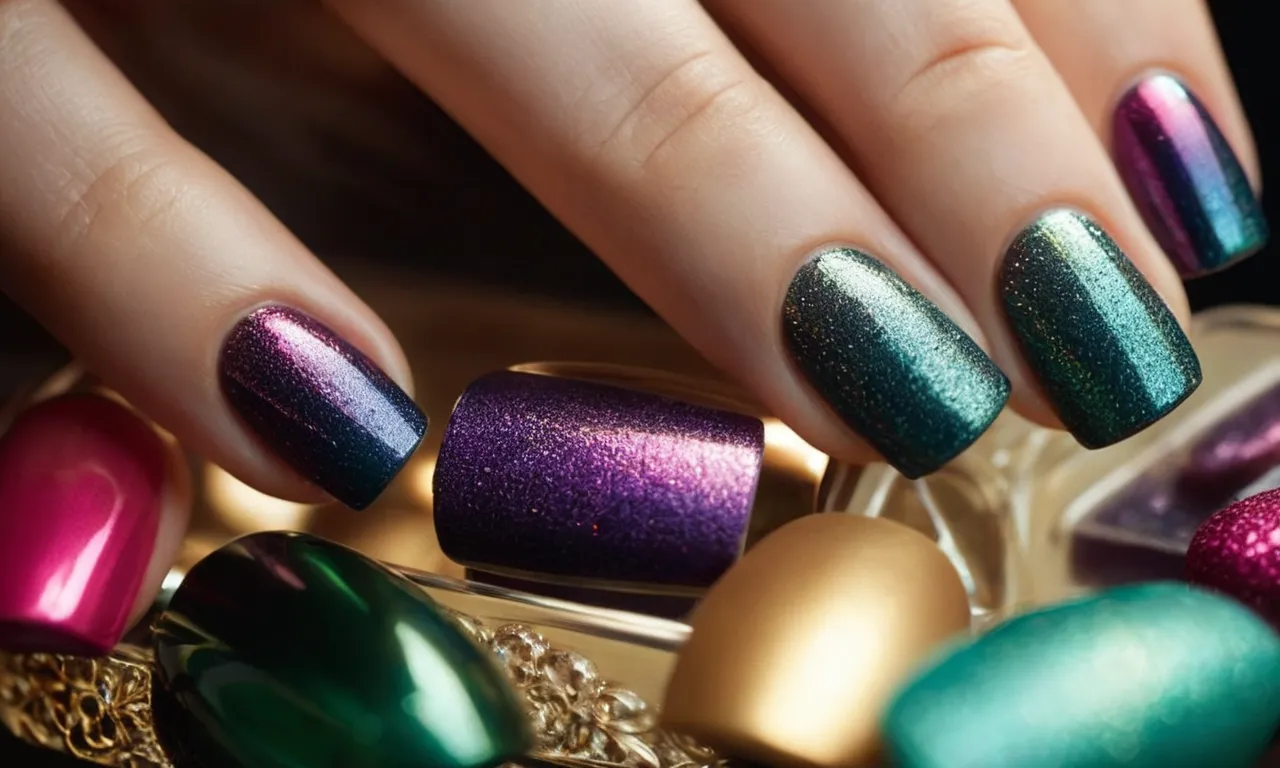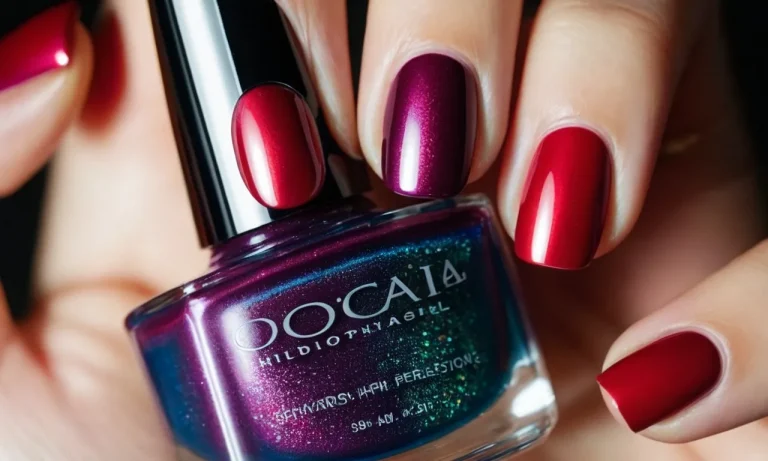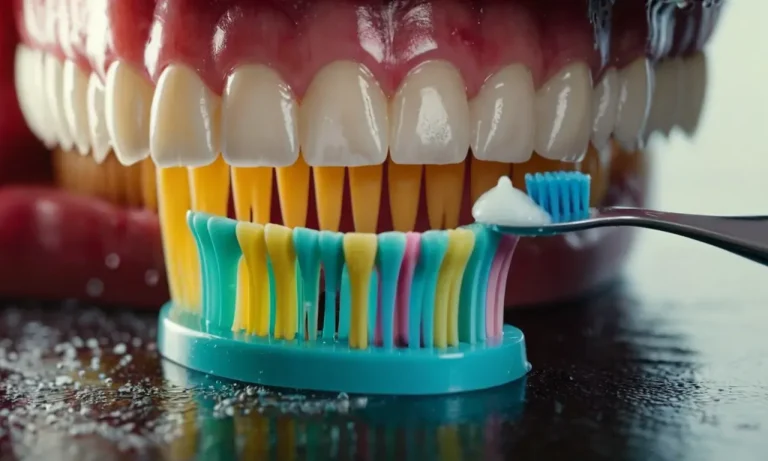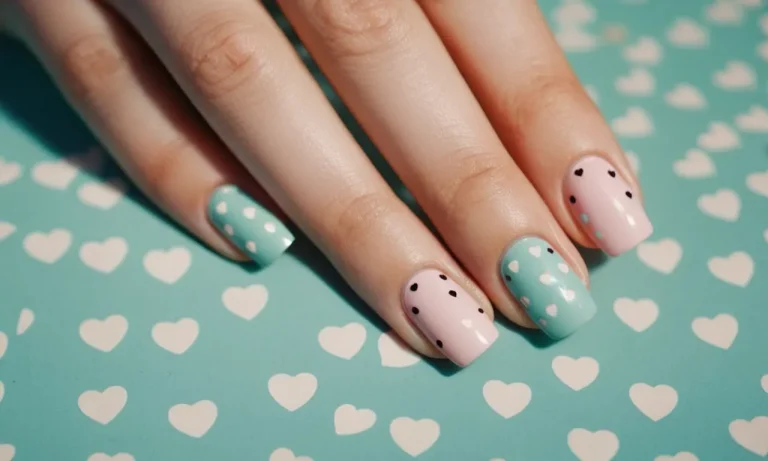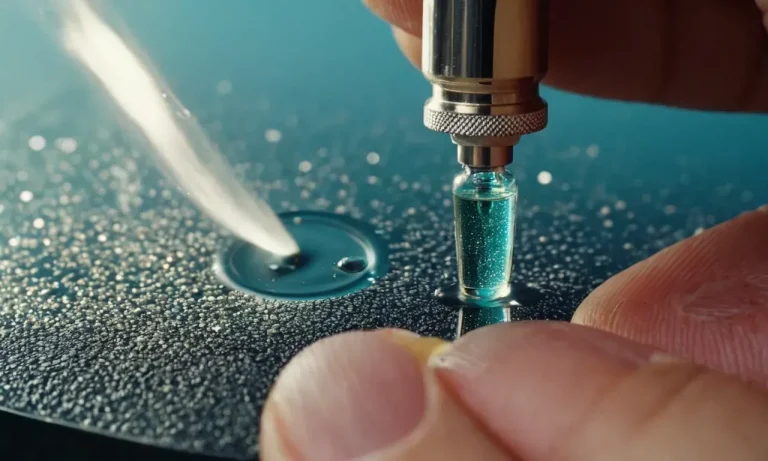Can You Use A Makeup Brush For Acrylic Nails?
Applying acrylic nails at home can be tricky without the right tools. If you don’t have a proper acrylic brush, you may wonder if substituting a makeup brush will work. The short answer is yes, you can use certain makeup brushes to apply acrylic nails or nail extensions, but there are some key considerations.
Throughout this comprehensive guide, we will explain in detail if and how makeup brushes can serve as acrylic nail brushes. We will cover what types of makeup brushes work best, how to prepare them for use with acrylic, application techniques, and care recommendations.
By the end, you’ll understand the pros and cons and have the knowledge to decide if your makeup brushes can pinch-hit when a proper acrylic brush is unavailable.
Which Types of Makeup Brushes Work Best for Acrylic Nails
Angle Brushes
Angle brushes are a go-to for acrylic application. The angled shape allows for precise control in painting the fine details on nails. The bristles on angle brushes are typically firm, enabling you to grab onto just the right amount of acrylic powder or liquid.
With the right angle and pressure, these brushes can create stunning acrylic nail designs.
Look for angle brushes that are a bit flat yet still sharply angled. The flatness gives you a wider surface area to work with. A brush that is too rounded at the tip makes application trickier. High-quality synthetic bristles are ideal for acrylic work.
They hold their shape well and allow for smooth application.
Angle brushes excel at painting on french tips or creating straight lines and sharp corners on nail art. You can also use them for filling the underside of the nail. Their precision is perfect for beginners still working on control.
Detail Brushes
Detail brushes are essential for the intricate, delicate acrylic designs that are so popular lately. These brushes have ultra-fine tips, allowing you to paint on miniature works of art.
Look for detail brushes with tightly bound bristles. They should keep their shape, even with repeated dipping into monomer liquid and acrylic powder. The tips need to be very pointed. This lets you make super-thin lines and catch even the smallest details.
Detail brushes are awesome for nail art like flowers, animals or landscapes in miniature. You can also use them for doing very fine French tips. Their tiny size gives complete control for the most precise application.
It takes practice and a steady hand to master detail brushes. But once you get the hang of them, they open up a world of potential for creative, stunning acrylic nail designs.
Prepping Makeup Brushes for Use with Acrylic Products
Condition the Bristles
Before using your makeup brushes to apply acrylic nails or other acrylic products, it’s important to properly condition the bristles first. Just like you would condition your hair before using hot styling tools, prepping the bristles prevents damage from the intense acrylic ingredients.
Start by washing the brushes with a gentle shampoo to remove any residue. Rinse thoroughly. Next, apply a lightweight conditioner and work it into the bristles. Allow it to sit for 5-10 minutes before rinsing. The conditioner creates a protective barrier on the bristles.
Remove Any Makeup Residue
Even if you think your makeup brushes are totally clean, they likely still have traces of color cosmetics stuck between the bristles or ferrule. Any makeup residue can react negatively with acrylic products and also contaminate your nail work.
Give the bristles a good comb through with a special makeup brush cleaner tool. This will loosen and remove unseen buildup. Check closely and repeat combing if you see any stained liquid come out while cleaning.
You can also do a deep clean by mixing a small amount of brush shampoo and olive oil, massaging into the bristles, and rinsing until the water runs clear. The oil breaks up stubborn makeup stains.
Sanitize the Brush
The final vital step is to fully sanitize the brushes so no bacteria or germs get into your acrylic nail application. Even if you will only use the brush on yourself, sanitizing prevents any contamination issues.
After the brushes are cleaned, mix a sanitizing solution of 1 part bleach and 10 parts water in a cup or bowl. Dip the brush bristles in the solution for 10 minutes. Rinse under water and allow to fully air dry before using with acrylics.
You can also use brush sanitizer sprays or UV sanitizing devices. However, bleaching is considered the most effective DIY sanitation method.
By properly conditioning, cleaning, and sanitizing, you can safely prep makeup brushes for applying acrylic nails or similar products without damage. The bristles will glide smoothly while keeping contagions away.
Proper Acrylic Application Techniques with a Makeup Brush
Apply the Right Amount of Product
When using a makeup brush for acrylic nails, it’s crucial to apply the perfect amount of acrylic powder and liquid. Applying too much product can result in lumpy, thick nails. On the other hand, too little product may not adequately cover the nail or adhere properly.
Start with a small, pea-sized amount of acrylic powder on your palette. Then, use the brush to sweep up only a tiny droplet of liquid—a little goes a long way. This thin consistency will help the acrylic glide onto the nail smoothly and evenly.
Control the Brush at Correct Angles
Angle control is vital for flawless acrylic application with a makeup brush. Holding the brush perfectly perpendicular to the nail is key. This prevents bumps or uneven spots by allowing the bristles to fully contact the entire nail surface.
Additionally, pulling rather than pushing the brush while applying product gives you better control over the angle. Pulling enables you to see exactly where the bristles are making contact for precise application.
Blend Properly
Carefully blending the acrylic into the natural nail and cuticle area is essential for a seamless, professional look. With adept use of the makeup brush, you can evenly integrate the product into the nail so there are no distinct edges or lines.
Use the tip of the brush to gently encourage the product towards the cuticles without actually touching them. Soft, rounded blending motions are best to mix the materials for a faded, graduated appearance.
Avoid leaving any unblended acrylic blobs or clumps. Take your time perfecting this skill, as good blending is truly what makes or breaks the finished nail.
Caring for Makeup Brushes Used with Acrylics
Clean After Every Use
It is crucial to clean makeup brushes after each use, especially if you have used them to apply acrylic nail products. Acrylic residue left on the bristles can dry out and ruin the brushes over time. Here are some tips for cleaning properly:
- Use brush cleaner or a mixture of water and mild soap. Gently swirl the bristles to release the acrylic particles.
- Rinse until the water runs clear and no residue remains in the water.
- Lay flat or hang bristles down to air dry. Acrylic residue trapped in the ferrule can cause bristles to fall out.
Store Properly When Not In Use
Storing brushes improperly can lead to damage and shortened lifespan. Follow these storage guidelines:
- Place clean, dry brushes in a makeup organizer, cup, or protective sleeve.
- Store handle-down or flat to maintain the shape of the bristles.
- Keep in a clean, dry area away from sunlight and heat to prevent damage.
Replace Bristles Regularly
With regular acrylic use, brush bristles eventually wear down and need replacement. An expert tip is to check brushes monthly and replace if you notice:
- Fraying or falling out bristles
- Bent shape that cannot be restored
- Residual product clinging to the bristles after cleaning
Quality brush sets with removable ferrules allow you to replace only the bristles rather than buying new handles. Replacing bristles every 3-6 months is recommended for those regularly using brushes with acrylics.
The Pros and Cons of Using Makeup Brushes for Acrylics
Using makeup brushes for acrylic nail application has become an increasingly popular technique. While they can make the application process easier in some ways, there are also some downsides to using makeup brushes instead of traditional acrylic brushes. Let’s explore the key pros and cons.
Pros
One of the biggest advantages of using makeup brushes is that they tend to be less expensive than specialty acrylic brushes. Since you may already have makeup brushes on hand, it can save you money to try using them.
Makeup brushes also allow you to achieve fine, detailed application. Their tapered shape gives you precision control over the product placement. This makes them ideal for nail art and creating intricate acrylic designs.
In addition, makeup brushes are available in a wide range of shapes and sizes. You can find small brushes for detail work as well as larger brushes for full coverage application. This versatility allows you to use different brushes for different techniques.
Cons
On the downside, makeup brushes are not designed specifically for use with acrylic products. They may not hold up as well over time when used regularly with acrylics.
The bristles on makeup brushes tend to be much softer and less dense than acrylic brushes. Soft bristles have a harder time picking up and holding thicker acrylic products.
Makeup brushes are also more prone to shedding bristles when used with acrylics. Shedding can lead to bristles getting stuck in the nail product or ruining your work.
Finally, cleaning acrylic residue out of makeup brushes can be challenging. Dried acrylic is extremely difficult to remove compared to makeup products. Frequent acrylic use may permanently damage makeup brushes over time.
Conclusion
While makeup brushes shouldn’t replace a proper acrylic nail brush in the long run, you may be able to use certain ones in a pinch. Angle and detail makeup brushes tend to work best if properly prepped and used with care. Still, they have limitations for blending and precision.
Weigh the pros and cons to decide if your makeup brushes can temporarily substitute when applying acrylic nails or extensions.

